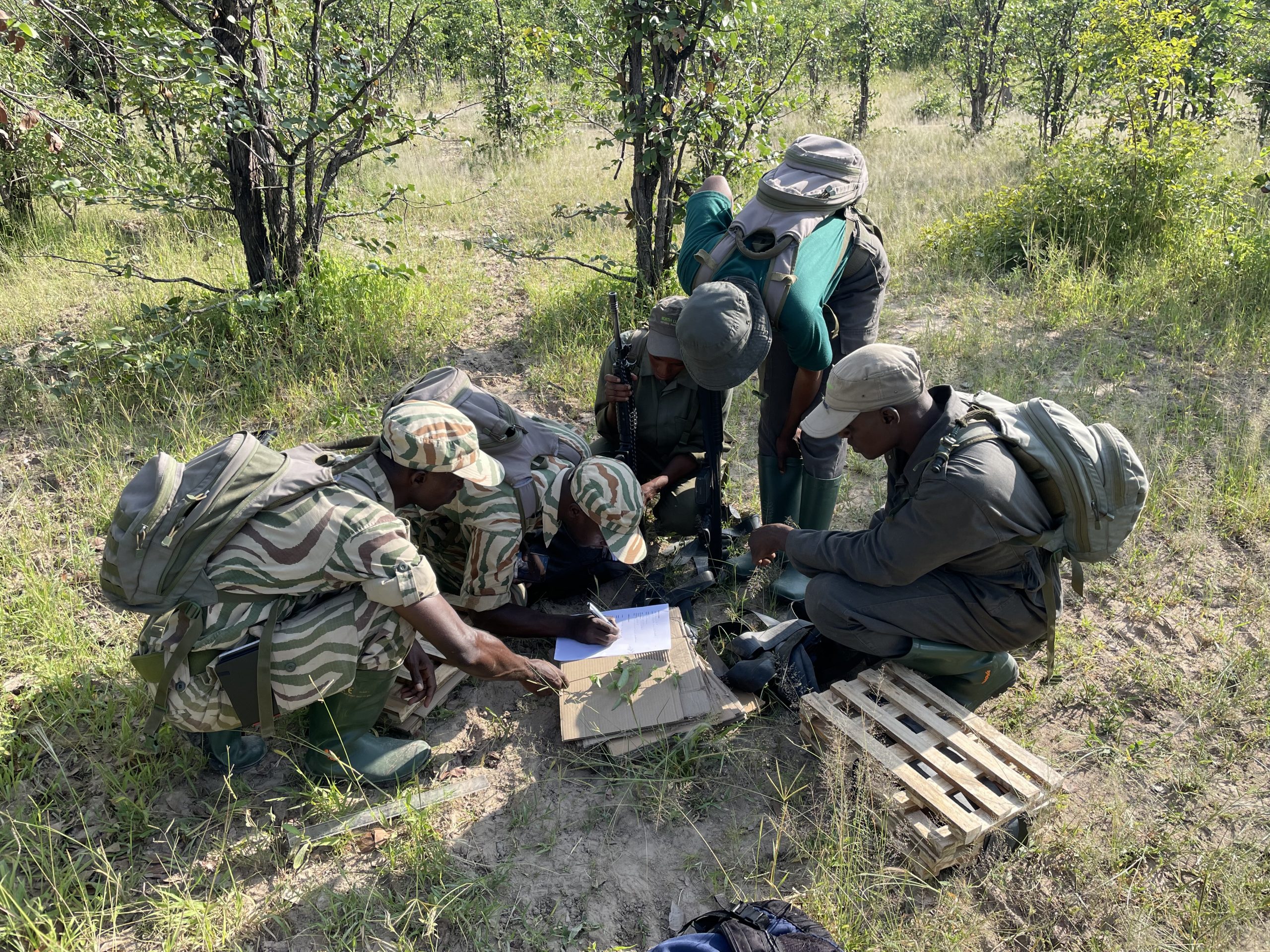Making Things Simple
-
Country
Zambia -
Region
Global -
Programme
BGCI -
Workstream
Sharing Knowledge and Resources -
Topic
Conservation Prioritisation -
Type
Blog -
Source
BGCI
News published: 21 March 2023
I have just returned from a week in Zambia’s North Luangwa National Park, where I started my career carrying out the first vegetation survey of the park in the early 1990s. Since then, thanks to the efforts of Frankfurt Zoological Society, the Zambian National Parks and Wildlife Department and other partners, the black rhino has been successfully reintroduced to the park and to Zambia after it was extirpated from the country by poachers in the 1980s. My trip focused on training rhino monitors in plant identification and the collection of herbarium specimens so that we can build up a picture of what they eat – particularly as the founder population of rhinos was translocated from South Africa more than a thousand kilometres to the south.
As you can see from the photograph below, the rhino monitors are trained wildlife rangers whose main job is to keep the rhinos safe from poachers. The thing that struck me spending a week with these rangers and the wider team at the North Luangwa Conservation Project is how well they do the basics: biodiversity monitoring, law enforcement, community engagement, education and providing employment for local people. What they don’t do is to read the scientific literature, or spend their time modelling innovative solutions to the biodiversity crisis. This got me thinking about how much money, time and intellectual resource we waste in the conservation community.
How much we fiddle while Rome burns.
The people who keep the rhinos, elephants, lions, leopards and a myriad of other biodiversity safe – including more than a thousand species of higher plants – are the local people on the ground. This is not to say that those local people on the ground can’t use our help.
But how often do we ask what they need? How often do we listen to what they need?
In this particular case, the rhino monitors had noticed that the rhinos eat a lot of perennial herbs during the wet season but how could they characterise and quantify these and therefore work out the carrying capacities of the different habitats in the park? Unlike the woody species, most of the herbs do not have vernacular names, there are no field guides, and there are over 800 of them. The checklist I compiled for the park in 1995 is arranged according to family, genus and species and back then I photocopied every herbarium specimen I made so there are black and white images available of each species. However, these are also arranged by family, and to know where to start to identify a species you need a key or to know the characters of the different families. Here is a typical case of an academic approach not being fit for purpose in practical conservation.
The solution was to teach the team to:
- recognise the major plant families present in the park;
- make herbarium specimens, and build a local herbarium reference collection, and;
- photograph plants in the field and set up a digital photograph reference library arranged by flower colour, with each image identified to family, genus and species.
We will also provide longer term assistance in identifying new specimens and photos as those are collected throughout the year. That’s it! No high impact factor papers, no synthesis reports, no distribution modelling, no hand wringing over whose IP is being utilised or who was and who wasn’t consulted. Just plain old translational science –
“good, fundamental plant taxonomy turned into something useful for people managing and conserving biodiversity.”
Back in 2017, BGCI carried out a review looking at how botanic gardens measure success. ‘Number of plant species conserved’ was the only conservation metric in the top 10 botanic garden performance measures. In addition, the main activities constituting ‘plant species conservation’ were seed banking and development of horticultural protocols for growing plants. Useful, but only if those seeds and protocols reach people working on the ground. The fact is that biodiversity institutions that have spent their history (very usefully) documenting biodiversity seem to struggle to deliver their information and resources in a palatable form to those who are trying to manage biodiversity in the landscape.
Is this because we see our peers as our primary customers? Are our main audiences academics, reviewers and research councils?
If so, we are actively undermining our own raison d’etre, which has always been to better understand, manage and conserve biodiversity in the landscape. Time we worked much more closely with conservation practitioners in the real world.

Become a Member
Be part of the largest network of botanic gardens and plant conservation experts in the world by joining BGCI today!
Support BGCI
You can support our plant conservation efforts by sponsoring membership for small botanic gardens, contributing to the Global Botanic Garden Fund, and more!